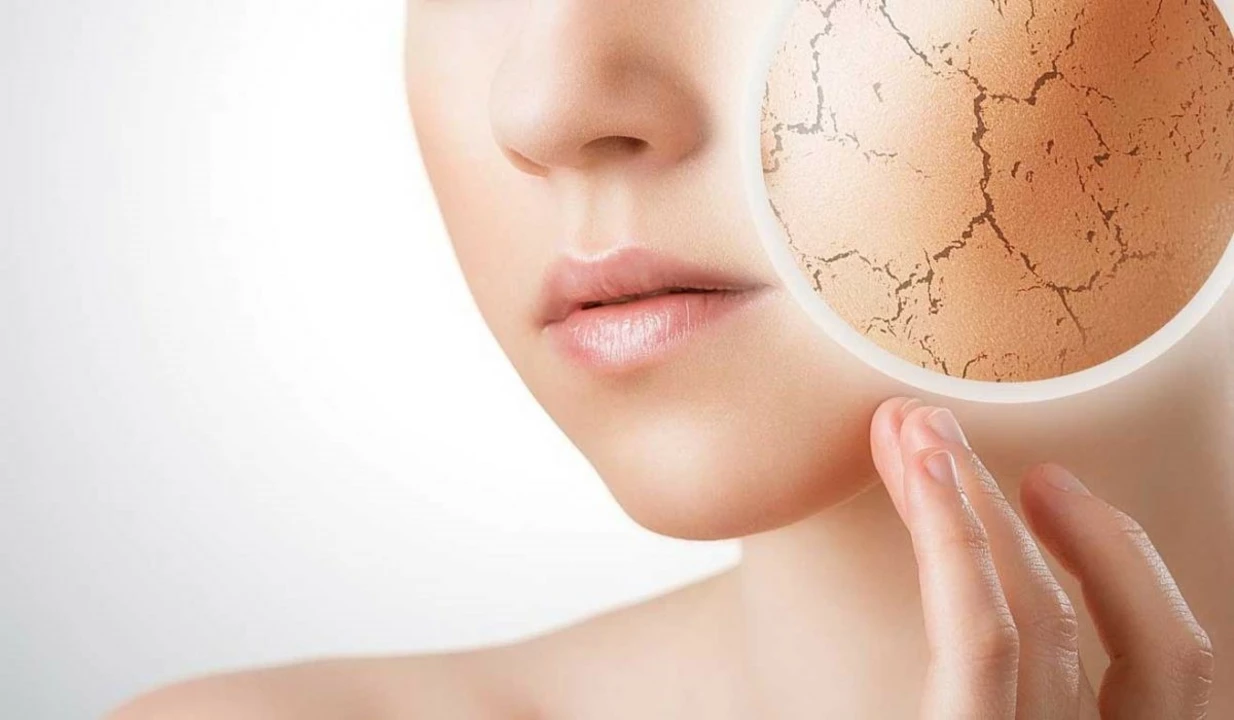Understanding Mycosis Fungoides
Mycosis Fungoides is a rare type of skin lymphoma that develops in the T-cells, a type of white blood cell. This form of non-Hodgkin lymphoma primarily affects the skin, leading to a variety of symptoms, such as rashes, itching, and thickened skin. It is important to understand the nature of this condition to know how to properly care for your skin and maintain its health.
Although Mycosis Fungoides is a slow-growing cancer, it can progress to other parts of the body if left untreated. Early diagnosis and proper skin care play a critical role in managing the condition and improving the patient's quality of life. In this article, we will discuss several tips for maintaining healthy skin while dealing with Mycosis Fungoides.
Importance of Regular Skin Examinations
Regular skin examinations are crucial for early detection and management of Mycosis Fungoides. This means checking your skin for any changes or unusual symptoms, such as redness, scaling, or thickening. You should also pay close attention to any itching or discomfort in the affected areas.
It is advisable to consult a dermatologist or healthcare professional if you notice any suspicious changes in your skin. They can properly assess your condition and recommend appropriate treatment options. Remember that early diagnosis and treatment can make a significant difference in managing Mycosis Fungoides.
Proper Cleansing and Moisturizing
Keeping your skin clean and moisturized is essential in managing Mycosis Fungoides. Use a gentle, fragrance-free cleanser to wash your skin daily, avoiding harsh soaps or scrubs that can irritate the skin. Pat your skin dry with a clean towel instead of rubbing, as rubbing can cause further irritation.
Moisturizing is equally important, as it helps maintain the skin's natural moisture barrier and prevent dryness. Apply a fragrance-free, hypoallergenic moisturizer to your skin immediately after bathing to lock in moisture. Reapply as needed throughout the day, especially in areas prone to dryness and itching.
Managing Itching and Discomfort
Itching is a common symptom of Mycosis Fungoides, and it can be quite bothersome for affected individuals. To manage itching, consider using over-the-counter anti-itch creams containing hydrocortisone or calamine. These products can provide temporary relief from itching and discomfort.
Additionally, applying a cool compress to the itchy areas can also help alleviate the sensation. Avoid scratching, as it can lead to further irritation, inflammation, and potential infection. If itching persists or worsens, consult your healthcare provider for alternative treatment options.
Protecting Your Skin from the Sun
Exposure to the sun's ultraviolet (UV) rays can exacerbate symptoms of Mycosis Fungoides and increase the risk of skin damage. It is crucial to protect your skin from the sun by wearing protective clothing, such as long sleeves, hats, and sunglasses.
Additionally, use a broad-spectrum sunscreen with an SPF of 30 or higher on all exposed skin areas. Remember to reapply sunscreen every two hours, or more frequently if swimming or sweating. Seek shade whenever possible and avoid peak sunlight hours, typically between 10 am and 4 pm.
Choosing the Right Clothing and Fabrics
The clothing you wear can have a significant impact on the comfort and health of your skin. Opt for loose-fitting, breathable fabrics, such as cotton or bamboo, to minimize irritation and allow your skin to breathe. Avoid tight, constrictive clothing and synthetic materials, as they can exacerbate itching and discomfort.
Additionally, when washing your clothes, use fragrance-free, hypoallergenic laundry detergents to avoid potential skin irritation. You may also want to consider using an extra rinse cycle to ensure that all detergent residue is removed from your clothing.
Managing Stress and Anxiety
Stress and anxiety can negatively affect your skin and worsen symptoms of Mycosis Fungoides. It is essential to find effective ways to manage stress and maintain a positive outlook. Consider incorporating relaxation techniques, such as deep breathing exercises, meditation, or yoga, into your daily routine.
Additionally, engaging in regular physical activity, spending time with loved ones, and pursuing hobbies can help improve your mental well-being. If you are struggling with stress or anxiety, consider seeking professional help from a therapist or counselor.
Staying Informed and Connected
Living with Mycosis Fungoides can be challenging, but staying informed about your condition and connecting with others who share similar experiences can make a significant difference in your overall well-being. Educate yourself about Mycosis Fungoides by researching credible sources and discussing your condition with your healthcare team.
Additionally, consider joining support groups or online forums where you can connect with others who are living with Mycosis Fungoides. Sharing your experiences, asking questions, and receiving support from others who understand your challenges can help you feel less isolated and more empowered in managing your skin health.







9 Comments
Jennell Vandermolen
Thanks for sharing these practical tips. It's really helpful to have a clear routine when dealing with Mycosis Fungoides. Keeping the skin clean and moisturized, while avoiding harsh fragrances, can make a big difference in daily comfort. Also, gentle reminders to schedule regular dermatologist visits are worth the extra effort. Stay consistent and listen to what your skin tells you.
Mike Peuerböck
Indeed, adhering to a disciplined skin‑care regimen is paramount. The incorporation of hypoallergenic emollients, coupled with diligent photoprotection, constitutes a comprehensive approach. Moreover, one might consider integrating ceramide‑rich formulations to reinforce the epidermal barrier-an elegant solution that aligns with both dermatologic best practices and aesthetic considerations.
Simon Waters
While the advice sounds solid, remember that many skincare products are laced with hidden chemicals that the industry doesn’t want you to know about. Even “fragrance‑free” labels can conceal synthetic compounds that may aggravate Mycosis Fungoides. It’s wise to research the supply chain and opt for truly natural alternatives whenever possible.
Vikas Kumar
Our country’s traditional remedies beat all that modern hype.
Celeste Flynn
I’ve been following the guidelines for Mycosis Fungoides for a few years and have gathered a handful of extra strategies that complement what’s already outlined.
First, when you bathe, use lukewarm water instead of hot water because high temperatures can strip the skin’s natural oils even faster.
Second, after patting the skin dry, apply a thin layer of a ceramide‑based moisturizer within three minutes to lock in hydration before the skin cools down.
Third, consider adding a gentle oatmeal colloid wash once a week; the colloidal oatmeal can soothe itching without introducing harsh surfactants.
Fourth, keep a humidifier running in dry climates or during winter months to maintain ambient moisture levels, which helps prevent flare‑ups.
Fifth, when selecting sunscreen, look for mineral‑based formulas with zinc oxide or titanium dioxide, as they tend to be less irritating than chemical filters.
Sixth, wear a wide‑brim hat and breathable, UPF‑rated clothing whenever you’re outdoors, especially during peak UV hours.
Seventh, track any new skin changes in a simple journal, noting the date, location, and any potential triggers like new soaps or stressors.
Eighth, involve a trusted friend or family member in your skin examinations so you have an extra set of eyes to catch subtle differences you might miss.
Ninth, practice short, guided breathing exercises before bedtime; reducing stress can lower cortisol, which in turn may diminish inflammatory responses in the skin.
Tenth, stay hydrated throughout the day by drinking at least eight glasses of water, because systemic hydration reflects on skin health.
Eleventh, if you notice persistent itching despite topical creams, discuss the possibility of phototherapy with your dermatologist, as targeted UV treatment can be beneficial for some patients.
Twelfth, avoid synthetic fabrics like polyester that trap heat and moisture, opting instead for natural fibers such as organic cotton or bamboo.
Thirteenth, when laundering clothes, add an extra rinse cycle to ensure detergent residues are fully removed, which minimizes potential irritants.
Fourteenth, stay updated with reputable patient advocacy groups; they often share the latest research findings and community‑driven tips that aren’t in mainstream articles.
Finally, remember that consistency is key-small, daily habits add up to significant improvements in comfort and quality of life.
Shan Reddy
Great rundown, really helpful. I’ll try the oatmeal wash and humidifier this winter. Thanks for the clear steps.
CASEY PERRY
Implementation of barrier‑restorative lipid therapy in conjunction with broad‑spectrum UVB photoprotection optimizes epidermal resiliency in Mycosis Fungoides management.
Naomi Shimberg
While the aforementioned protocol appears scientifically sound, one must question the overreliance on commercial lipid formulations that are frequently under‑regulated; traditional emollients derived from botanical sources may offer superior biocompatibility without the hidden additives pervasive in modern dermatologic preparations.
kenny lastimosa
In the grand tapestry of bodily health, skin is not merely a barrier but a mirror reflecting the inner equilibrium; tending to it with mindfulness may reveal deeper insights into the balance between mind, body, and the environment.